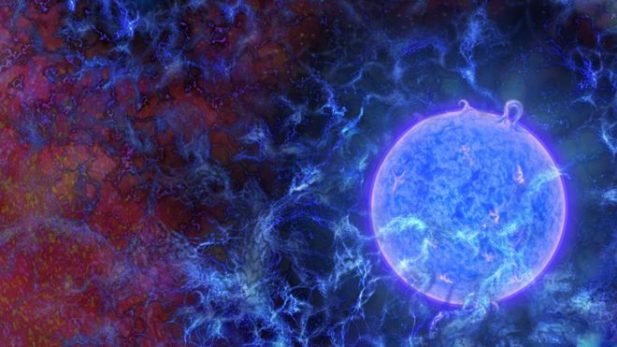The "dawn of the universe": that's how the first stars that were created after the Big Bang

There was a time when everything was darkness.
After the Big Bang that gave birth to the universe, there was a time with no light. In astronomy it is known as the Dark Age .
Hundreds of millions of years later, with the first stars, the so-called " cosmic dawn " took place .
It was then that the neutral hydrogen that formed the dense dark layer of the universe began to accumulate in some parts of that huge dark mass, until it collapsed and the first stars formed .
Now, a team of scientists has been able to detect for the first time the signals of one of those stars, active 180 million years after its formation.
This means that if our cosmos is 13.8 billion years old, the first stars took place 9 billion years before the Sun even gave a small sign of life.
A special antenna
One of the most surprising things about this finding is that the team of researchers managed to detect the signals of the primitive star among all the noise in the universe.
Some scientists have described it as listening to the sound of a hummingbird in the middle of a hurricane.
The signal was, fortunately, much more intense than expected.
To capture it, the research team used a radio telescope that resembles a deping-pong table located in the middle of the Australian desert, away from all noise.
The hydrogen was in a state that could only be explained if it had been touched by an intense light coming from a star .
But reaching this conclusion was not easy, says Dr. Judd Bowman, from the University of Arizona, in the United States, who led the investigation.
"We began to collect analyzes in 2015 and we have spent the last two years trying to think of all kinds of possible alternatives that would explain the state in which hydrogen was. But no other was conclusive. "
The observation of this first primitive star is described this month in the scientific journal Nature and is described as a possible "milestone for astrophysical observation type".
A singular star
Scientists have been searching for decades for some evidence of primitive stars, very special stars in their appearance and composition .
The theory says they would have grown out of the cold hydrogen gas that filled the universe after the Big Bang.
Probably before exploiting and sowing the cosmos with all the possible elements that later allowed the origin of life , they were unmanageable, with a very intense brightness but a short life.
Even today's technology does not capture these ancient stars directly, but it is possible to capture indirect evidence of their activity, say astronomers.
Boost Your Post. Send 0.100 STEEM or SBD and your post url on memo and we will resteem your post on 5000+ followers. check our account to see the follower count.